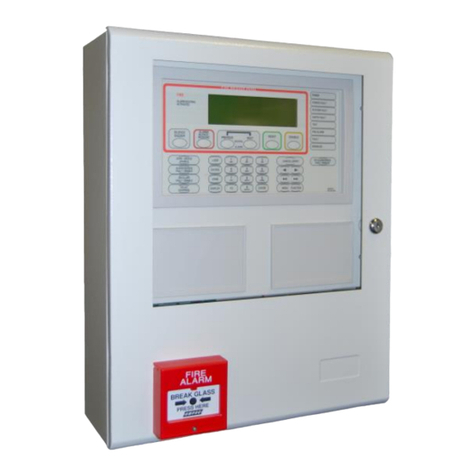
6.9
Printer ..........................................................................................................................29
6.9.1
Indicators and Buttons ...............................................................................29
6.9.2
Maintenance.................................................................................................30
6.9.3
Printer Connections and Jumpering.........................................................31
6.9.4
Printer 5 Volt Power Supply ( 302-713 ).....................................................31
7
Expanding the System Through Networking ..........................................................................32
7.1
Communications: Controller Interface Card 302 - 725............................................32
7.2
Communications: Network Interface Card 302 - 724...............................................32
7.3
Expansion Board ( 302-688 )......................................................................................33
7.4
Expansion Controller .................................................................................................33
7.5
Networking ..................................................................................................................34
7.6
Liquid Crystal Display Repeater Panel 302 - 7200...................................................36
8
SmartTerminal............................................................................................................................37
8.1
Operation.....................................................................................................................37
8.2
Access levels ..............................................................................................................37
8.3
Specifications..............................................................................................................38
8.4
Overview......................................................................................................................38
8.5
Operational & Key Features.......................................................................................39
8.6
Mechanical...................................................................................................................39
8.7
Installation & Cabling.................................................................................................40
8.8
Setting the Address....................................................................................................41
8.9
Setting the SmartTerminal Controller Configuration in ConfigManager ...................42
8.10
Setting the SmartTerminal Reporting Parameters in ConfigManager........................42
8.11
SmartTerminal Controls.............................................................................................43
8.12
SmartTerminal Indicators ..........................................................................................45
9
LCD Screen Format....................................................................................................................47
9.1
Trouble Shooting Chart..............................................................................................48
10
Agent Release Control...............................................................................................................49
10.1
Operation.....................................................................................................................49
10.2
Agent Release Module BRD25ARB -A......................................................................54
10.3
Controlled Access ......................................................................................................54
10.4
Panel Indicators..........................................................................................................54
10.5
Local Control Station ( LCS ) BRD25ARB -B ...........................................................56
10.6
Agent Release Termination Board BRD25ATB........................................................57
10.7
Interface Wiring...........................................................................................................58
10.8
Warning Signs.............................................................................................................60
11
Occupant Warning Systems .....................................................................................................62
11.1
EV60 / 120 ....................................................................................................................66
11.2
EV3000 .........................................................................................................................66
12
Brigade Devices .........................................................................................................................67
12.1
ASE ( Vic Metro ) Brigade Box...................................................................................67
12.2
Brigade Box ( Deltec WA, SA, TAS,QLD ) ................................................................67
13
FireFinder
TM
Operation ..............................................................................................................68
13.1
The Control Panel.......................................................................................................68
Function And Menu..............................................................................................................................71
13.2
The Default LCD Display............................................................................................71
13.3
Accessing Functions and Menus..............................................................................71
13.4
Function Menu and Access Levels...........................................................................71
13.4.1
Forgotten Passwords..................................................................................71
































